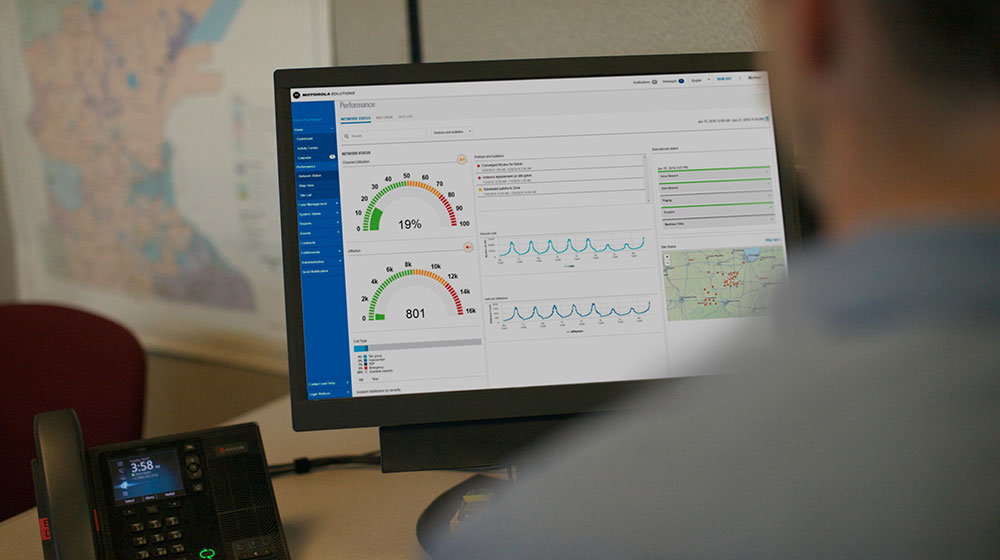 It’s one of the first phone numbers we learn when we are young: 9-1-1. We learn to only call when it is an emergency, that the person on the other end of the line will ask for our address and what is wrong. But what we don’t usually learn about, or even think about, is the complex operation on the other end of the line that is working to get us the help we need.
It’s one of the first phone numbers we learn when we are young: 9-1-1. We learn to only call when it is an emergency, that the person on the other end of the line will ask for our address and what is wrong. But what we don’t usually learn about, or even think about, is the complex operation on the other end of the line that is working to get us the help we need.
Dispatchers at 9-1-1 centers, like the Waukesha County Communications Center (WCC), are truly the first first responders. My team answers calls during some of the scariest and sometimes worst moments of people’s lives all the while staying calm, cool and collected guiding these callers through what they need to do and simultaneously coordinating response from any combination of police, fire and EMS personnel.
Behind the scenes at WCC, there is a team of 50 plus dispatcher staff that work day in and day out to coordinate radio communications for 19 police departments and 19 fire/EMS departments using a network of software technologies from Motorola Solutions to share information in order to coordinate a safe and efficient response. Every year we field almost 250,000 calls using some of the most advanced mission-critical communication solutions to help people in our communities when they need us the most.
“9-1-1, what is the location of your emergency?”
When you call 9-1-1, this is the first question we will ask you so that we can be sure of your exact location to increase the accuracy of our notes and save precious time for the responders being dispatched. WCC uses Motorola Solutions’ CallWorks software with integrated RapidSOS supplemental location data to show incoming 9-1-1 calls and Text to 9-1-1 on one map and prioritize them. The application manages the receipt of emergency calls and seamlessly dispatches a response with a simple, easy-to-use workflow and user interface designed to work the way dispatchers intuitively do. In an emergency every second matters and this aids in streamlining the process of getting responding units dispatched.
“Tell me exactly what happened?”
Your answer to this vital question helps us begin the process of getting the appropriate responding units enroute to the scene of the emergency. As you, the caller, continues to explain what is happening, my WCC team is using Motorola Solutions’ MCC 7500 dispatch consoles to share real-time information with the right people involved in the response. We are sharing details such as injuries the caller may have sustained; was there anyone else was involved or on the scene when the incident happened; a description of the person who committed the crime and so on. Sharing this information quickly and accurately is key to giving the responders awareness of the situation before they arrive on the scene and to aid in preparing them for the actions they may need to take.
End-to-End Technology Support
All of the notes we are taking during the call are relayed in real-time to responding units, but are also saved so that they can be referenced later if needed. To do this, WCC dispatchers, and our Law Enforcement field partners rely on Spillman RMS, an integrated records management solution that utilizes a centralized, single-source database. This allows us and our field partners to quickly access the accurate insights they need on an active or closed case. Spillman RMS serves as a single source of truth by removing the need for us to log into multiple platforms only to enter the same information multiple times, which saves time and increases accuracy across files.
To coordinate with responders on the scene of an incident, WCC law and fire/EMS dispatchers use OASIS, a mission-critical ASTRO® 25 Regional radio network supplying seamless communications across Waukesha and Milwaukee Counties. This kind of communications flexibility and interoperability helps keep those in need safe because the right first responders can be brought in and work together to address incidents, no matter which public safety or service agencies from which community in the region are responding. We also use Motorola Solutions’ cloud-based CirrusCentral Management solution to monitor the health of our radio network which maintains and ensures the availability of our network from anywhere at any time.
From the second a call comes in to the time a case closes, my team of dispatchers rely on advanced software and communications technology to help people living, working or playing in Waukesha County during their time of need. Our jobs are often times mentally and emotionally demanding, but technology that is fully integrated from end-to-end helps streamline our work and gives us one less thing to worry about so that our full attention can be where it matters most: on the caller who needs a public-safety response while supporting our field partners charged with that duty of service.




